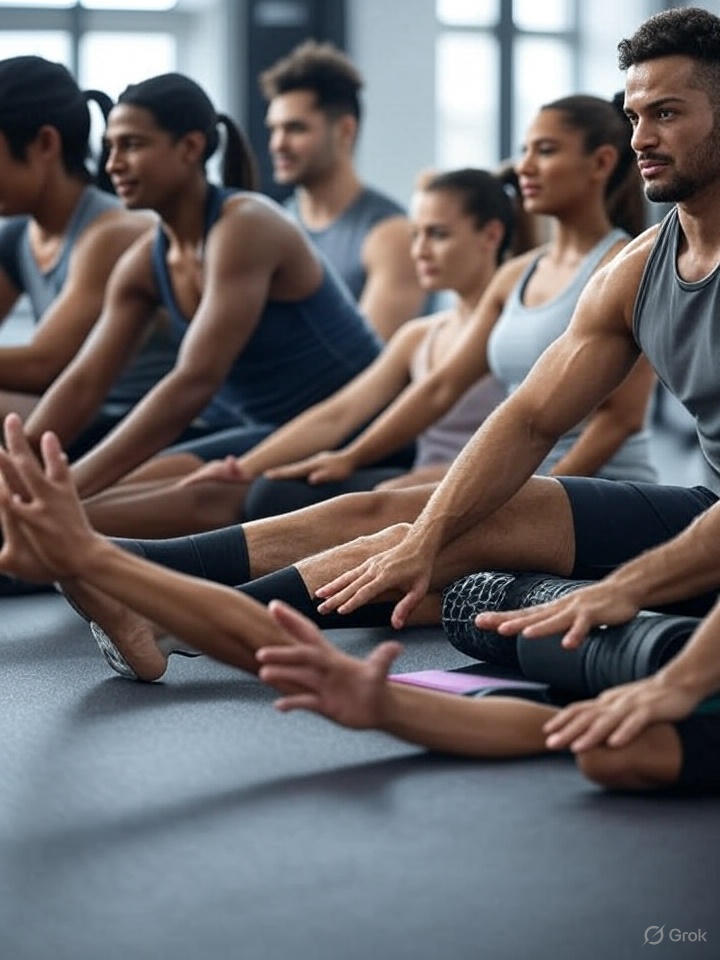In athletics, performance is about preparation, skill, and recovery. Proper warm-up and cool-down routines play a fundamental role in reducing the risk of a sports injury. Warming up and cooling down support flexibility, circulation, and muscle resilience. Skipping these steps can increase the likelihood of strains, sprains, or other setbacks that keep athletes sidelined. Here’s more information on the role of warm-up and cool-down techniques in preventing sports injuries:
Warming Up Before Physical Activity
Warming up prepares your body for exercise by gradually increasing blood flow to your muscles. This process raises your body temperature and improves flexibility, creating optimal conditions for physical activity. Your heart rate increases gradually, allowing your cardiovascular system to adjust to higher demands.
Cold muscles are stiff and prone to a sports injury. A proper warm-up makes your muscles pliable and responsive to movement. Your joints also benefit from increased synovial fluid production, which lubricates joint surfaces and reduces friction during activity. The warm-up process also prepares your nervous system for coordinated movement. Your brain sends signals more efficiently to your muscles, improving reaction time and movement quality.
Warm-Up Techniques
Dynamic stretching forms the foundation of an effective warm-up routine. Unlike static stretching, dynamic movements take your joints through their full range of motion while gradually increasing intensity. Light cardiovascular activity should precede sport-specific movements. A few minutes of jogging, cycling, or jumping jacks can elevate your heart rate and increase blood flow throughout your body. This general warm-up creates the base for more targeted preparation.
Sport-specific warm-up exercises follow general cardiovascular preparation. Basketball players can practice dribbling and shooting motions at reduced intensity. Runners can perform high knees and butt kicks to activate running muscles. These movements help your body rehearse the specific patterns you’ll use during your main activity, thereby reducing the risk of a sports injury.
Cooling Down After Exercise
Cool-down routines help your body transition from high-intensity activity back to rest. Your heart rate and breathing gradually return to normal levels, preventing blood from pooling in your extremities. This process helps reduce dizziness and maintain proper circulation throughout the body.
Cooling down also helps remove metabolic waste products that accumulate during exercise. Lactic acid and other byproducts can cause muscle soreness and stiffness if not properly cleared from your tissues. Gentle movement during the cool-down phase maintains blood flow and facilitates waste removal. Your flexibility improves when you stretch during the cool-down period. Muscles are warm and more receptive to stretching after exercise, allowing you to safely increase your range of motion.
Cool-Down Methods
Static stretching is most beneficial during the cool-down phase. Hold stretches for 10-30 seconds, focusing on the major muscle groups you used during your activity. Your muscles are warm and pliable, making this the ideal time to improve flexibility safely.
Light walking or gentle movement should precede static stretching. This transition period allows your heart rate to decrease gradually while maintaining circulation. Abrupt stops after intense activity can cause sudden changes in blood pressure and dizziness.
Breathing exercises complement physical cool-down activities. Deep, controlled breathing helps activate your parasympathetic nervous system, promoting recovery and relaxation. This practice also helps you mentally transition from high-intensity focus back to normal daily activities.
Schedule Your Sports Injury Consultation Today
Proper warm-up and cool-down techniques significantly reduce your risk of sports injury. These practices prepare your body for physical activity and support recovery afterward. For persistent pain from a sports injury or to learn more about preventing injuries, contact a pain specialist to schedule your consultation today.

